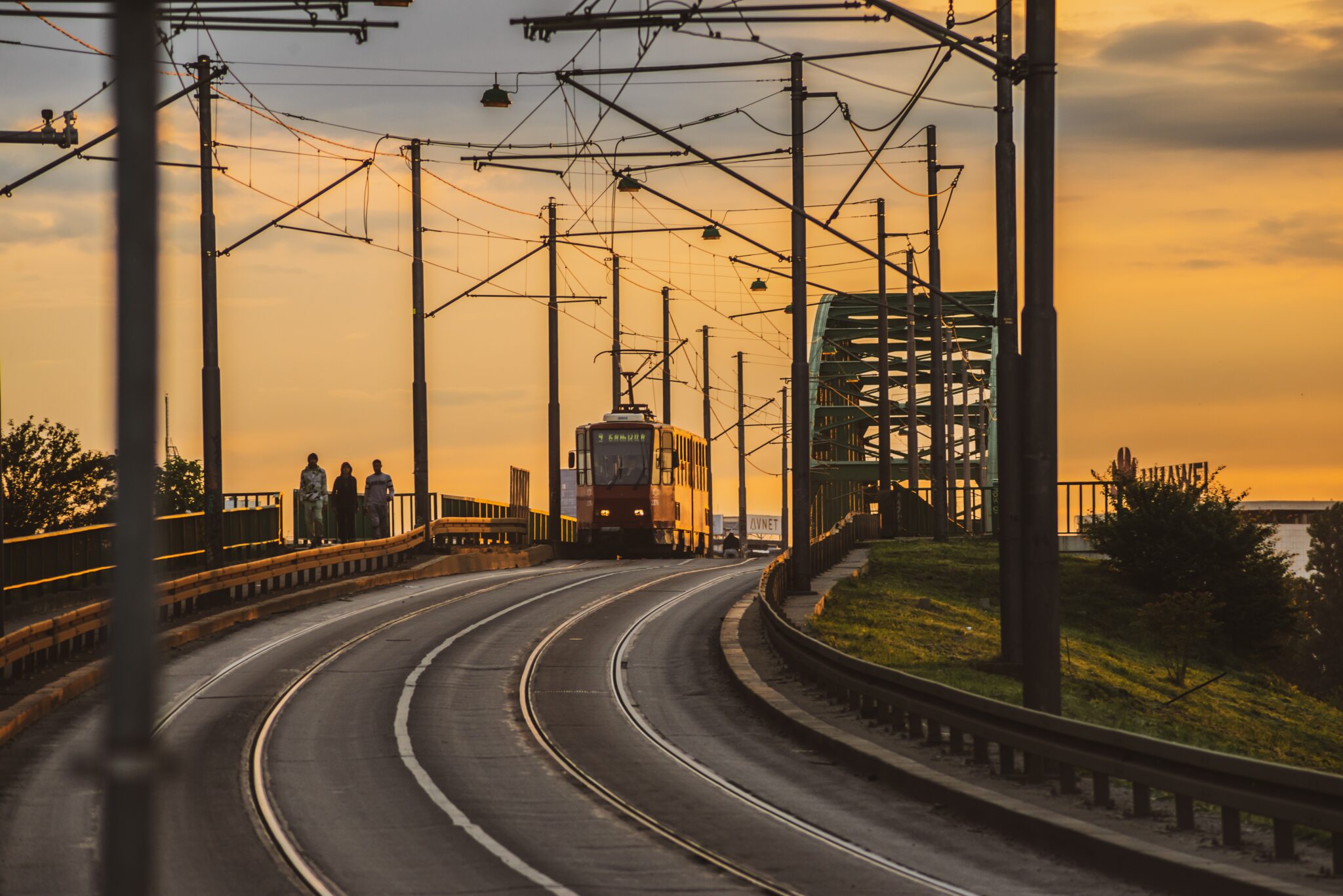RSA Events – Event Report – Regional Rail by RSA Research Network on Infrastructural Regionalism (NOIR)
The 2024 RSA Winter Meeting in London (on regional rail) by Regional Studies Association Research Network on Infrastructural Regionalism (NOIR)
By Dr. Jean-Paul Addie (email), Urban Studies Institute, Georgia State University (USA), Dr. Michael Glass (email), Urban Studies Program, University of Pittsburgh (USA) and Dr. Jen Nelles (email), Oxford Brookes University Business School (UK)
About NOIR
The RSA Research Network on Infrastructural Regionalisms (NOIR) challenges regional studies to address infrastructural questions by critically unpacking how infrastructure shapes regional lives, governance, and developmental pathways. Our conceptual framing of ‘infrastructural regionalism’ focuses on those infrastructures that have relevance beyond the local. Analysing regions through infrastructure provides a novel perspective on the regional question, as investment and disinvestment in infrastructure reveal vital discursive and material elements that produce, structure, and modify metropolitan regions worldwide. The development of infrastructural assets – ranging from transport and telecommunications to energy and sanitation – as part of regional policies raises conceptual and applied questions about how the funding, governance, and spatiality of such infrastructure can promote urban, economic, and ecological sustainability at the regional scale.
NOIR’s Aims:
- Showcase theoretically informed, empirically grounded research at the intersection of infrastructure studies and regional studies.
- Promote the formation of collaborative, interdisciplinary, and comparative research teams to stake out and mobilize new research agendas at the intersection of infrastructure and the region.
- Foster novel scholarship through senior/junior scholar and academic/practitioner exchanges at RSA network events.
- Promote information exchanges that can inform regional development policies.
Report
Regional Rail and Infrastructural Regionalisms
8 November 2024, London, UK — 2024 Regional Studies Association Winter Conference
This NOIR special session aimed to stimulate discussion engaging academics and practitioners around the policy and planning challenges of high-speed rail (e.g., HS2), regional networked mobility (Manchester’s Bee Network), and the differing capacities of epistemic communities to ‘see’ regional space through such projects. The session also officially served to launch the second phase of NOIR. It provided a timely moment for reflection for network members while looking to mobilize NOIR’s conceptual foundations for practical issues and practitioners.
The NOIR special session was attended by approximately 25 people in-person across the sessions (speakers and session attendees) with presenters from universities in the United Kingdon and France.
SS04: Regional Rail and Infrastructural Regionalisms
• Thomas Arnold, University of Liverpool, UK, “Regional Rail Imaginaries in Northern England: From the Pennines to Powerhouse and Beyond”
• Chia-Lin Chen, University of Liverpool, UK, “Stuck on Infrastructure? Planning for the Transformative Effects of Transport Infrastructure”
• Dan Durrant, UCL, UK, “High speed rail and national imaginaries”
• David Valler & Jen Nelles, Oxford Brookes University, UK, “EWR: Infrastructure and Regional Planning in the Supercluster”
• Nasima Baron-Yelles, University Gustave Eiffel, France, “Transit Thermal Re-infrastructuration don’t Refresh Hubs but Reactivate Node Planning”
• Adam Brown, Cambridge Econometrics, UK, Discussant
The papers were selected from a pool of submissions to the open call given their focus on, and engagement with, questions of regional infrastructure and infrastructural regionalism. We paid particular attention to issues of disciplinary and topic diversity and looked to include presentations from early career researchers.
The session challenged presenters to explore and draw out how regional rail infrastructure shapes regional imaginaries and governance and/or is shaped by it. Presentations focused predominantly on regional rail in the UK, touching on Northern Powerhouse Rail (Tom Arnold) and South Fylde (Chia-Lin Chen) lines in the North; HS2 (Dan Durrant), which was initially pitched as a high speed connection linking northern and southern parts of the country; and East West Rail (Dave Valler and Jen Nelles) – a line that will ultimately link Oxford and Cambridge and provide a strategic connection between eastern and western main lines. A case study of regional rail in the Cote D’Azur (Nacima Baron) offered a European perspective. Adam Brown concluded the session with remarks reflecting on shared themes across presentations.
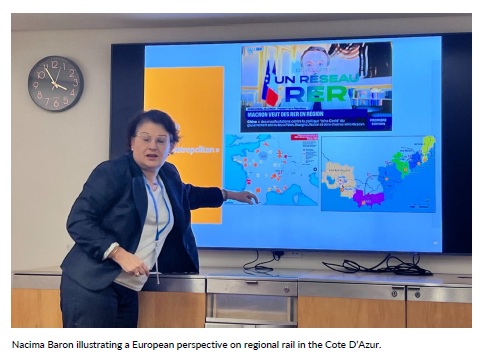
While presentations spanned various geographies, they also spoke to each other, underlining how regional imaginaries and infrastructural regionalisms are mutually constituted. For example, Tom Arnold identified four periods of Northern regional imaginaries within which projects associated with Northern Powerhouse Rail have evolved. In each period, infrastructure priorities shifted to serve shifting logics from pan-regional connectivity of the city centre to linking left-behind places (and beyond). Here, regional imaginaries are partly constituted by perceptions of infrastructural deficiencies, and rail planning occupies a central role in regional regeneration narratives, even though no consensus yet exists regarding the appropriate infrastructural remedy. Dave Valler and Jen Nelles contended that aspirational imaginaries that underpin the Oxford-Cambridge region rest on shaky foundations – the idea that linking infrastructure between two innovation poles will yield regional (or even national) benefits makes intuitive sens,e but lacks empirical evidence. However, the vision of a unified innovation region has played an essential role in moving the East West Rail (EWR) project forward. Adam Brown added that the real logic behind EWR was to (re-)establish a meaningful strategic connection between main lines and that the innovation region narrative was a politically expedient cloak for a project that was essentially about solving infrastructure and planning issues. This demonstrates how a multiplex of interests can adopt and use aspirational or convenient imaginaries, depending on perspective.
These examples suggest there may be a three-stage interdependency cycle of transport infrastructure, economic geographic reality, and administrative and perceptual boundaries: where the evolution of transport infrastructure shapes economic geography, economic geography shapes the boundaries of a regional imaginary, and boundaries shape the planning of infrastructure. While we have them listed in one order, the cycle can start with any of these. Similarly, there are questions about whether we do this “consciously” enough at each stage.
Imaginaries encompass but also exclude. Chia-Lin Chen’s analysis of the South Fylde line, conceived as a connection between Blackpool and Preston in Lancashire, shows that projects that have not secured clear roles in regional narratives struggle to penetrate planning cycles. Earlier infrastructural interpretations of regional rail in the North were highly city-centric and focused on linking city centers, paying less attention to the left-behind places that anchored subsequent plans. In each period, as focus shifted, different places were deprioritized or excluded.
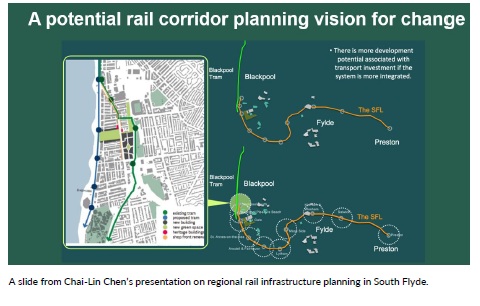
There has been a fascinating evolution of thinking from the simplistic urban-centric view to one where all components of a city region are understood as of equal importance, and the key to growth is integration and coherence, not favouring one type of area over another. Perhaps burnt over HS2, the infrastructural turn has evolved from advocating for between-city-region connectivity like HS2 to within-city-region connectivity like the Leeds Tram and (arguably) the Manchester-Liverpool railway, perhaps partly because this aligns better with political administration.
Time matters. Regional imagination and infrastructure development processes unfold over time, rarely in lockstep. Developments in one can drive, reshape, or disrupt progress on others. This is a significant theme in NOIR’s most recent edited collection, Infrastructural Times: Temporality and the Making of Global Urban Worlds. Crucially, in the case of Northern Powerhouse Rail, regional imaginaries have transmuted more quickly than the planning process has been able to concretise infrastructure plans. In the Oxford-Cambridge case, various parts of the EWR line have been upgraded, connected, or completed over nearly a decade. So, most attention is now focused on local dramas where remaining alignments have yet to be finalised. This fragmentation and a certain amount of parochialism undermine the regional logic as local actors emphasise the line’s potential to relieve growth pressures and serve a broader commutershed.
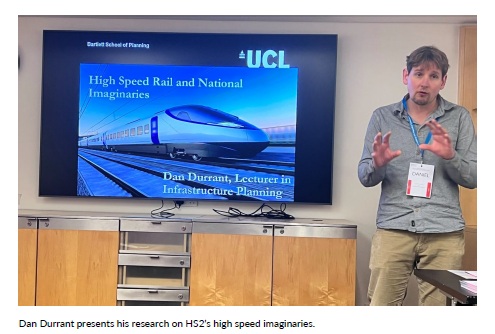
The promise of regional infrastructure can also erode over time, dampening underlying logics and forcing narrative adjustments and political reckonings. Dan Durrant’s paper offered a critical perspective on the logics underpinning the HS2 project, citing, particularly, related to economic growth potential and progress towards sustainability goals. As the legs of the project were gradually cancelled, these claims have become even more challenging to defend. However, one of the participants wondered if the current political tension over HS2 would have been as acute if it had been built decisively within expected timeframes.
This group of presentations stimulated a rich discussion and set up the potential for future dialogue around different rail and infrastructural regionalism themes. We will continue the conversation with a series of sessions on Infrastructuring Regions at the AAG Annual Meeting in March 2025. And at the next RSA conference in Porto in May 2025, we will focus on issues of inclusive infrastructures and the dynamics of regional transformation.
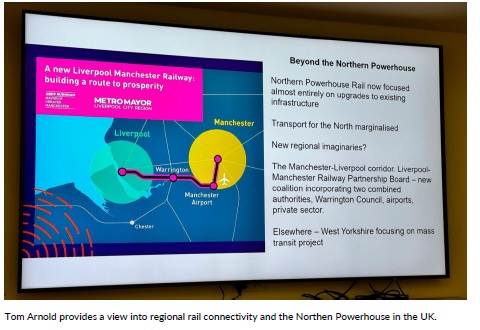
Jean-Paul Addie, Michael Glass and Jen Nelles

